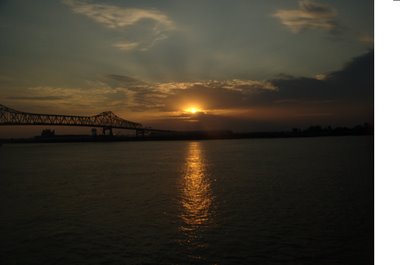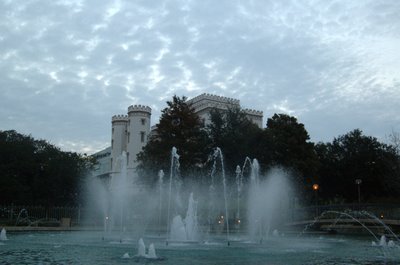
* Mercury vapor lighting can be cast out using a red filter
A blogospheric dream of an amateur photographer

Depth of field is one of the ABC's of photography every avid photographer needs to know.
Depth of field is the zone of sharpest focus around the subject. It is the distance from the focus point where the image is sharp and everything else gets more blurred. The depth of field itself may be altered as required based on the kind of shot a photographer wants. The depth of field can be changed by the following factors:
* increasing f stops will increase depth of field as it reduces the aperture size and hence critical focussing is required. Effectively increasing f stop (reducing arperture size) will make everything to be in sharper focus
* Depth of field also depends on distance, farther the subject better the depth off field
* focal length. Shorter the focal length, deeper is the depth of field. Wide angle lenses produce more depth of field than telephoto lens for a subject at the same distance

Filtering is another very important element of photography which diffrentiates between a good photograph and an extraordinary photograph. Some of the diffrent types of filters are as follows:
* Color compensation filter - These correct color shifts - available in 6 basic colors
* Diffusing filters has glass that is mottled or etched to break up the definition of the image slightly. They also conceal details and can help to creat halos around subjects
* Fog filters cut down on both colour saturation and contrast
* Light balancing filters - These help to balance the kind of light that is being used.
* Neutral Density filter can be used to limit the depth of field to a narrow zone. They are also used to limit the amount of light entering the camera
* Polarizing filters - Daylight is partly polarized. Polarizing filter allows light through one plane only. Polarizing filters absorb quite a lot of light and you will need to adjust the exposure by about 1 1/3 stops
* Ultraviolet filters - Reduce the bluish tint caused by UV radiation
* Yellow filters block the path of blue light, magenta blocks green and cyan filter blocks red light
* Graduated filters are toned over a part of the area with the remainder of the area clear
 Observe the photograph of this flower. It has the necessary shape the tells us it is a flower, the vibrant colors along with tone give it a shape that reaches out to you, there are no repetitive patterns but you can definitely feel the texture, dont you just wanna touch it?.....This close up has come surprsingly well considering the fact that I was using the default 18mm lens that came with my Nikon. I would really love to get a better macro lens to do more close ups. Any suggestions anyone for a good lens of the macro/micro category?
Observe the photograph of this flower. It has the necessary shape the tells us it is a flower, the vibrant colors along with tone give it a shape that reaches out to you, there are no repetitive patterns but you can definitely feel the texture, dont you just wanna touch it?.....This close up has come surprsingly well considering the fact that I was using the default 18mm lens that came with my Nikon. I would really love to get a better macro lens to do more close ups. Any suggestions anyone for a good lens of the macro/micro category?

 One of the beutiful things about using a digital camera is that the owner develops a new found eye to recognize color in nature. I have never before seen such vivid colors in nature as I have been doing so far. This is one such good example.
One of the beutiful things about using a digital camera is that the owner develops a new found eye to recognize color in nature. I have never before seen such vivid colors in nature as I have been doing so far. This is one such good example. Another great sunset picture. The main focus of this picture was the reflection of the sunlight falling on the water. One of the core issues in photography is when you have contrasting bright and dark locations when a snap is taken. Using a SLR it can be tricky to obtain the correct aperture and f stop when taking a picture of both dark and light regions. One solution is to focus on the lighter section , click the button and move the camera to the darker region and take a picture or vice versa. This trick enables camera lock on one section of the subject, and use this setting for the other parts of the subject. Of course this method has to be used with care.
Another great sunset picture. The main focus of this picture was the reflection of the sunlight falling on the water. One of the core issues in photography is when you have contrasting bright and dark locations when a snap is taken. Using a SLR it can be tricky to obtain the correct aperture and f stop when taking a picture of both dark and light regions. One solution is to focus on the lighter section , click the button and move the camera to the darker region and take a picture or vice versa. This trick enables camera lock on one section of the subject, and use this setting for the other parts of the subject. Of course this method has to be used with care.

